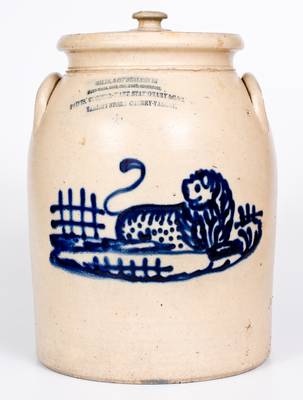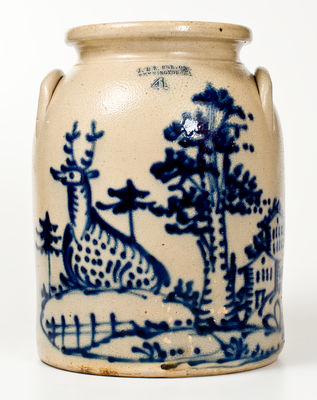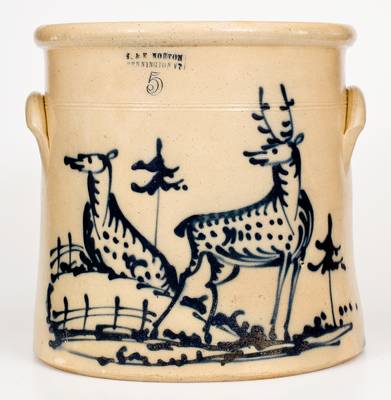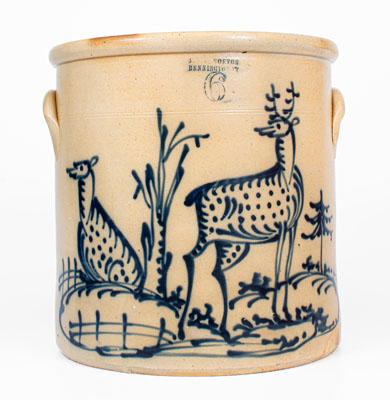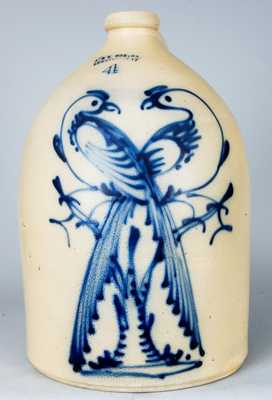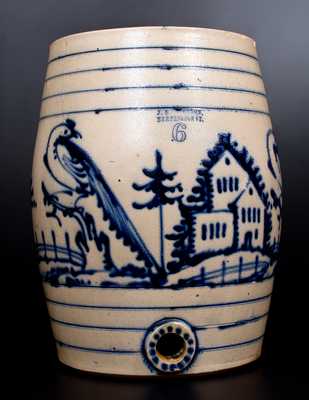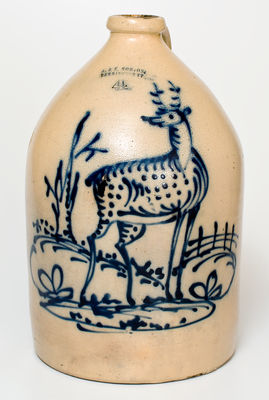Extraordinary Six-Gallon Stoneware Churn with Cobalt Horse Decoration, Stamped "J. & E. NORTON / BENNINGTON, VT," Julius and Edward Norton Pottery, Bennington, Vermont, circa 1855, ovoid churn with tooled shoulder, applied lug handles, and tall collar with semi-rounded rim, decorated with a slip-trailed design of a horse with raised leg, standing on a heavily-shrubbed ground, flanked by split-rail fences. The image includes a saddle, breast collar, and bridle on the horse, various striped and spotted treatments throughout the animal's body, and a well-drawn tail composed of numerous wavy trails. Among the finest and largest equine decorations in all of 19th century American stoneware, this work combines detail, size, and color to produce a figural design of exceptional quality. The horse alone measures approximately 10" long along the curve of the vessel and 8 1/4" tall. Compounding the desirability of this example is its Julius and Edward Norton maker's mark, perhaps the most desirable stamp in all of New England stoneware production. Differing in style from the well-known deer, lion, and bird motifs ascribed to the itinerant decorator, John Hilfinger, this horse motif is one of a few Norton masterwork designs known to be decorated by a different hand. A monumental E. & L.P. Norton water cooler with poem, a standout in the collection of The Bennington Museum, features a horse rendered by the same artist, captioned with the name "George," possibly that of the potter or the horse. Horses are the rarest of any animal motif found on Norton stoneware and we are aware of only three other pieces from this pottery featuring one. The artistry and rarity of the design easily make this churn the finest-decorated example of Norton family stoneware to come to auction in a decade or more. Literature: For two horse motif pieces decorated by the same artist as this churn, see Zusy, Norton Stoneware and American Redware: The Bennington Museum Collection, cover, p.45, fig. 22, and p. 46, figs. 23 and 24. Provenance: Ex-Sy Rappaport. A restored, approximately 12" diagonal crack to proper left side of churn's front, not affecting the decoration. A restored 3 1/2" x 1 1/2" wedge to proper right side of churn's front/right side of churn. An unrestored, shallow 1" chip to interior of rim. Two minor chips to inner rim for lid. Two shallow in-the-making chips to underside at edge. Light exfoliation to underside. Some minor staining. H 19 5/8".







